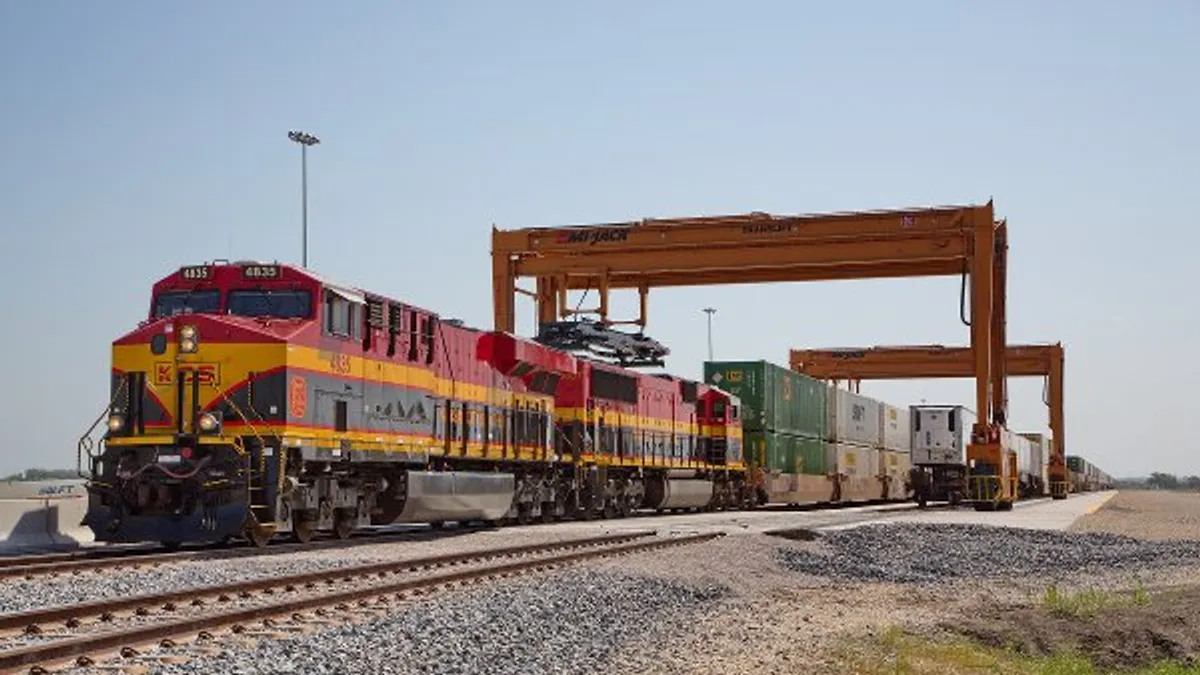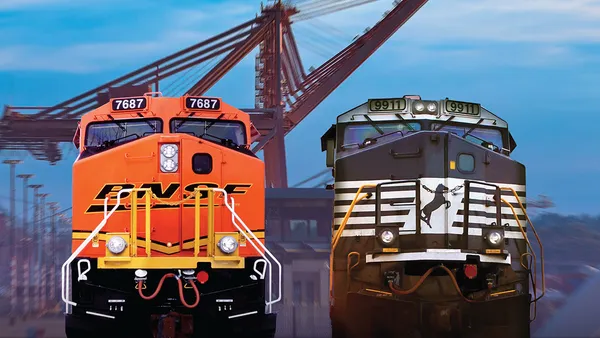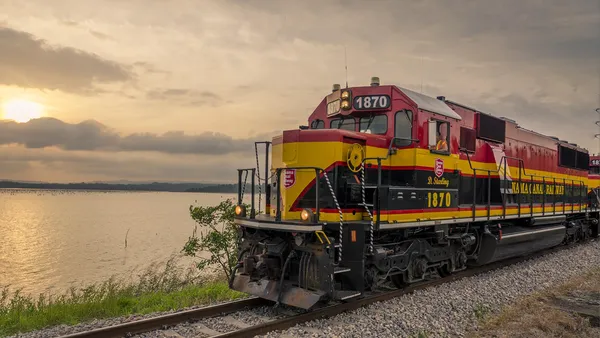Dive Brief:
- Kansas City Southern will reduce its management staff by roughly 7%, representing 100 to 150 employees, in the second half of 2020, COO Jeffrey Songer said Tuesday at the UBS Global Industrials and Transportation Conference.
- A top priority for the railroad throughout the pandemic has been "right-sizing resources to volume," Songer said. Employees, both corporate and operations staff, have been a large part of this effort. In the month of May, U.S. freight volume was down 19% while U.S. crew starts were down 30% compared to the first-quarter monthly average, indicating the railroad has reduced staffing at a faster rate than freight volume.
- The end of May was likely the bottom of the volume dip brought on by pandemic, Songer said. He added the down volumes have accelerated some of the PSR benefits for the railroad. Train velocity was up 26% and dwell was down 9% year-over-year in the first quarter. "The intent is that a lot of these things and changes are going to stick," Songer said.
Dive Insight:
Precision-railroading, the operating philosophy of most Class I railroads in the U.S., is defined by a relentless pursuit of efficiency and with manufacturing disrupted and rail volumes down across the industry, railroads have responded by seeing just how low they can go with their costs — without jeopardizing a comeback when volume returns.
Total rail volume was down more than 20% in the U.S. year-over-year in the week of May 11, according to UBS, but some executives have suggested their volumes losses could be greater. The drop has driven railroads to cut train starts and pull equipment out of service to lower operating costs.
Earlier in the month, Kansas City Southern forecasted mechanical costs would be down 25% YoY in Q2 with more than 130 locomotives headed to storage since April. The railroad posted a 9% drop in operating expense year over year in Q1. CEO Patrick Ottensmeyer said in April the railroad would still be ready to handle volume growth despite the cuts.
"A lot of the productivity gains we've seen here due to COVID-19 are going to remain with us," Songer said. Describing that as volume returns, crew starts and overall headcount at the railroad will not increase "one for one" based on historic performance.
Extending train lengths is a hallmark of PSR and key to this dynamic so shippers can expect fewer trains starts and more consolidation going forward.
"A lot of the work we've done on some of this consolidation is just reducing manifest strain starts and consolidating those," Songer said. "But we still have capacity on those trains to continue to do more."
Though a portion of Kansas City Southern's volume depends on Mexico's manufacturing restrictions, which are still in place, Songer said the railroad has likely seen the bottom of the pandemic volume crunch. Union Pacific CFO Jennifer Hamann expressed less confidence at the same UBS conference.
"It's hard to feel real optimistic when you still are facing volumes down 23%, but it does feel like things have maybe bottomed a little bit," Haman said. "It's hard to call the bottom though because I think there's still a fair amount of uncertainty in terms of how the reopening is going."















